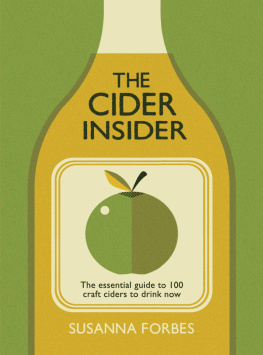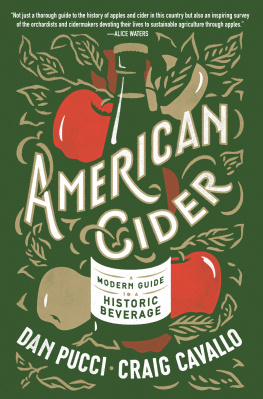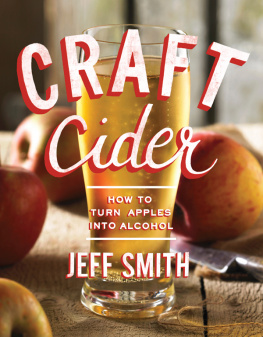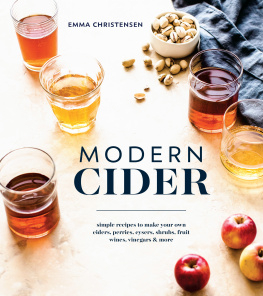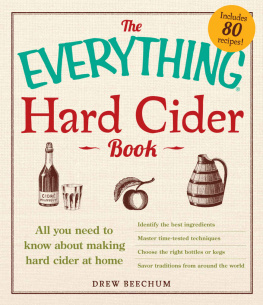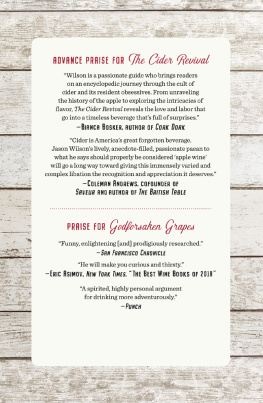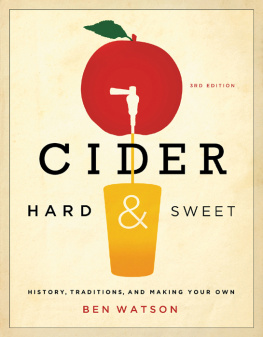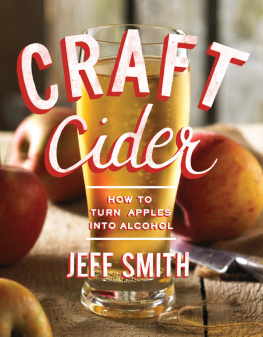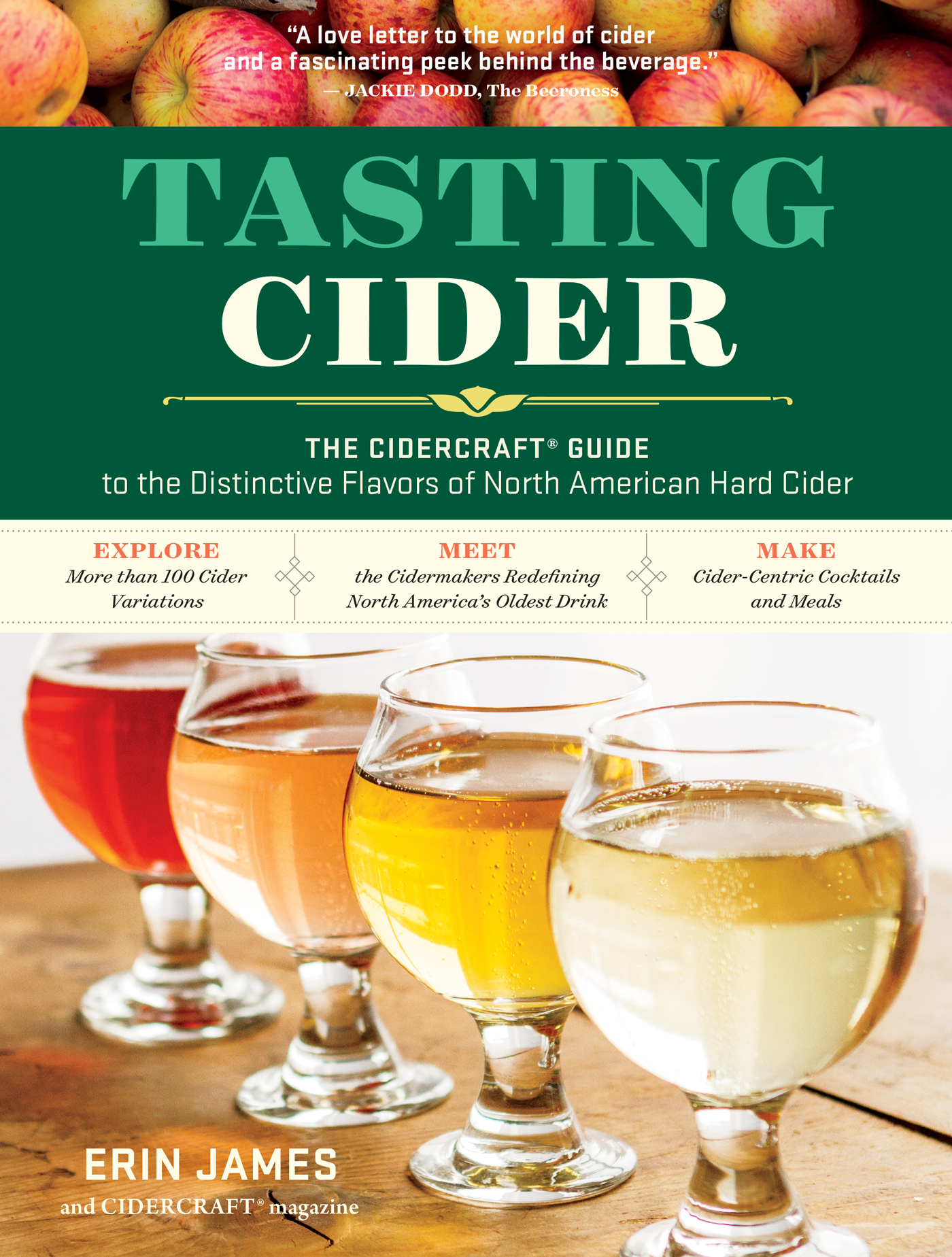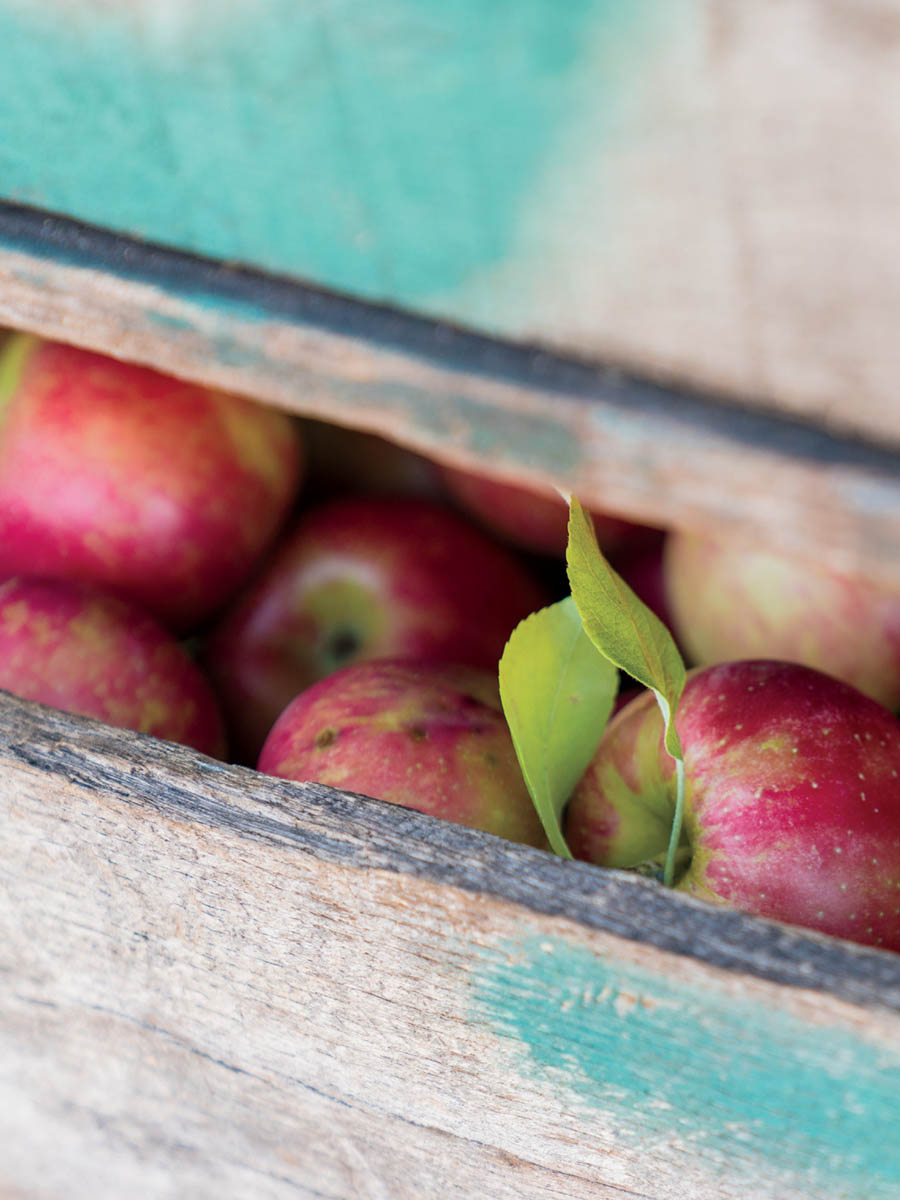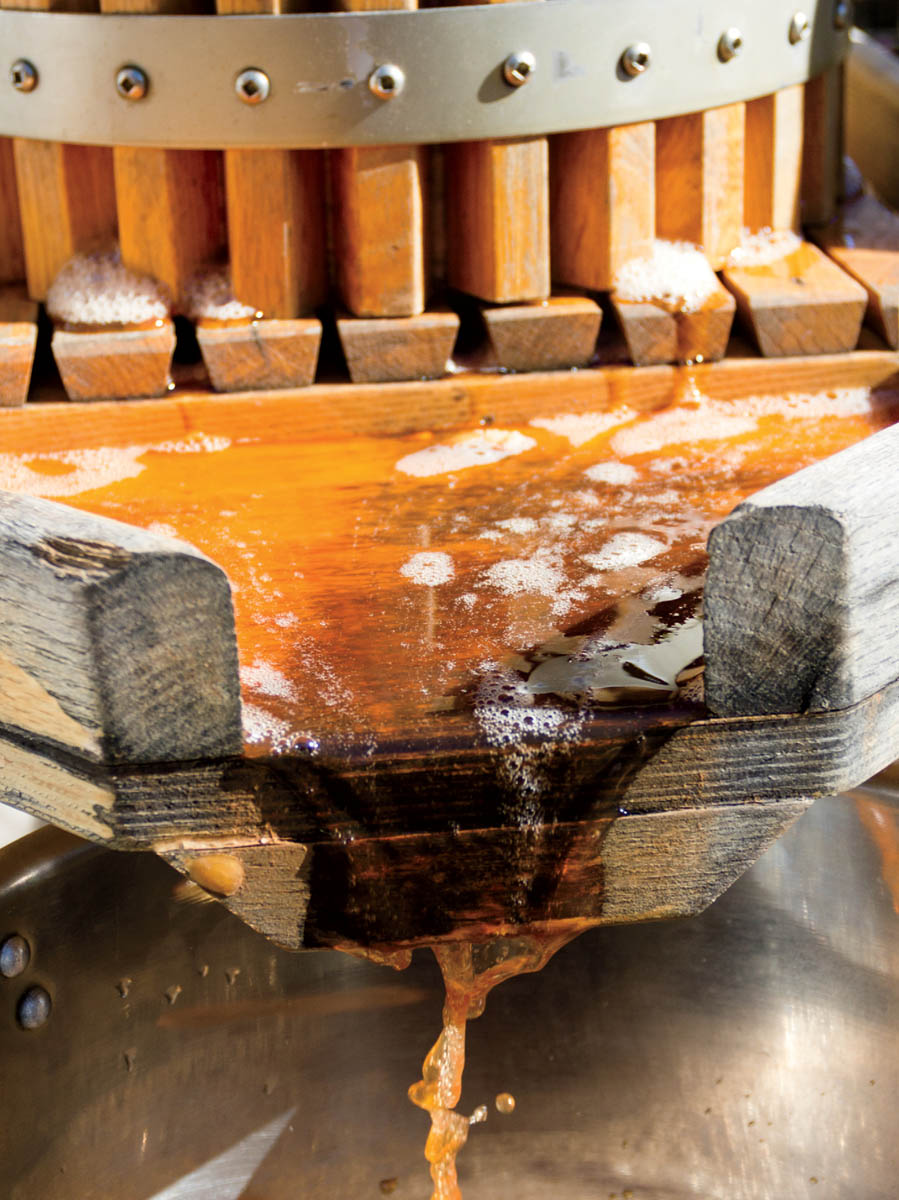This book is dedicated to all those who make the cider world go round from the makers to the readers, the novices to the enthusiasts, and everyone in between. Raise a glass and drink cider!
Contents
Introduction
Those of us at CIDERCRAFT magazine get called a lot of names, but first and foremost, we are cider drinkers. Enthusiasts, journalists, writers, advocates, promoters, sure but the consumption of the golden liquid in that glass is the reason why were all here, why we wake up in the morning, and what we hold at night. For years, weve been covering the trends and growth of this burgeoning beverage, yearning and anticipating for ciders time and place to shine. That time is now, that place is here, and we are CIDERCRAFT North Americas first print publication dedicated to hard cider. And this is our book about cider.
Cider is as American as apple pie. Not the garden-fresh apple juice from a pumpkin patch on a chilly, plaid-clad October afternoon or even the sugary apple brew of the 1990s. But cider the drink that helped build North America. Like our magazine that launched in early 2014, this book gives a snapshot of that forgotten history, of the basics on how its made, and a general tasting tutorial with recommended glassware, while digging into the variations of the drink from the arcane and the barrel-aged ciders to the avant-garde and the delicate perry. We collaborated with bartenders and chefs across the continent for recipes that mix, cook, and pair with cider, and we circled around the campfire gathering stories from North American producers who share their passion with such enrapturing vigor that you cant help but pour more of their juice in your glass.
Raise it up! This is Tasting Cider, a toast to North American hard cider.
Chapter
1
The Core Essentials
The United States of America was established upon mans basic rights in the New World: life, liberty, and the pursuit of alcoholic beverages. The influencers of the nation that became sovereign in 1776 were also likely looking forward to what else the fall harvest would bring cider. Thomas Jefferson planted nearly 50 trees of his beloved Albemarle (Newtown) Pippin cider variety on his Virginia estate. George Washingtons 1758 election campaign to the legislative assembly poured roughly 43 gallons of hard cider and beer to prospective voters. John Adams was an ardent apple-a-day consumer, and he took his servings in the form of cider. And some of Benjamin Franklins best-known one-liners address the fermented fruit juice: Its indeed bad to eat apples; its better to turn them all into cider.
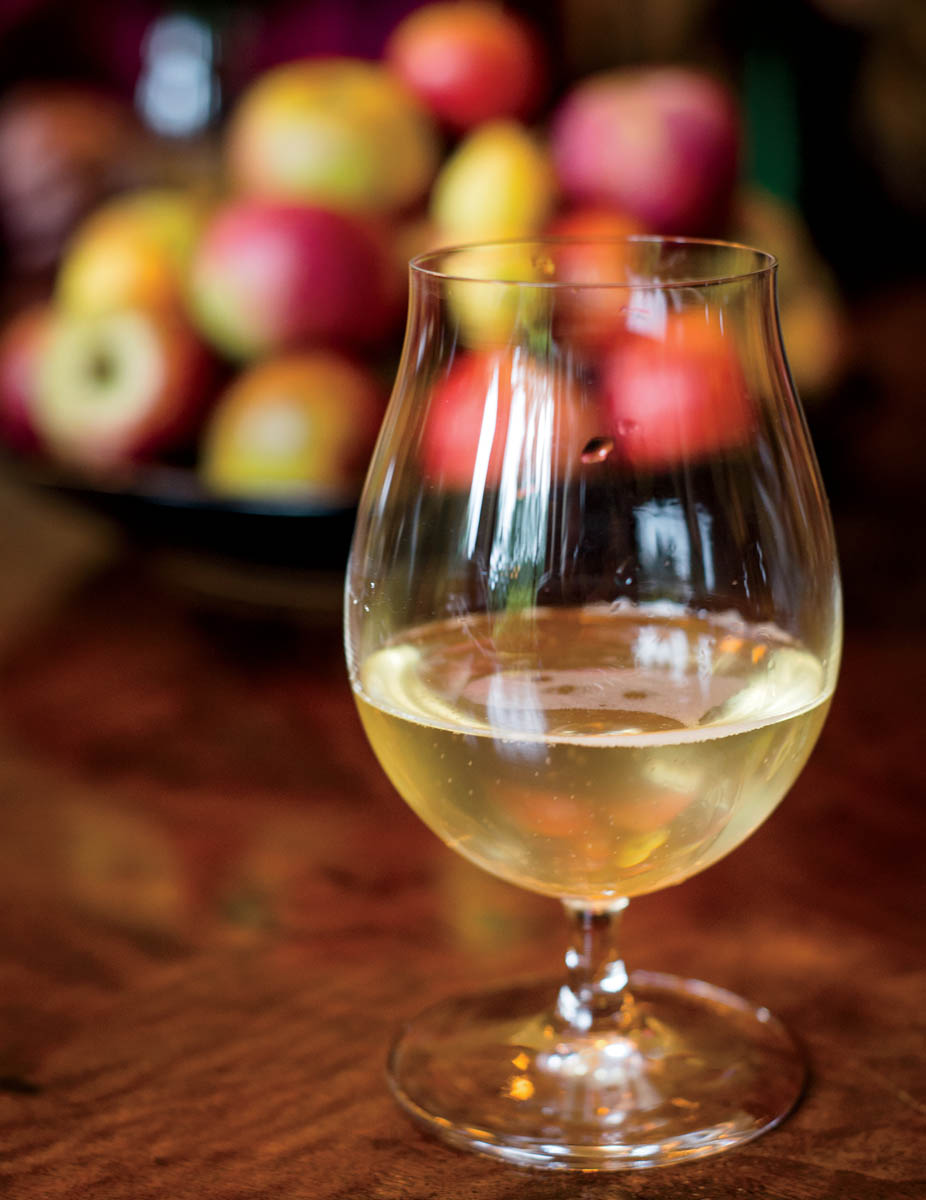
Early Canadian settlers witnessed the same cultural insurgence, with saplings and seeds coming mainly from France to New France (modern-day Qubec). The first recorded cidery was established in the mid- to late seventeenth century on an orchard near present-day Montral. Largely produced by those of faith, cider in Canada was a mainstay in the New France Catholic Church, even when the temperance movement came knocking in the early twentieth century a solid 78 percent of Qubcois voted for beer, ciders, and light wines to be excluded from the list of prohibited alcoholic beverages. This, unfortunately, did not stick, and cider remained illegal to sell until 1970 due to an oversight in the Alcoholic Beverages Act that left the drink out of the original legislation that ended Canadas prohibition.
Courtesy of the temperance movement, the prohibition of alcohol, and various agricultural changes, the once-booming cider industry fell to the wayside across North America. Craft producers were bottling small commercial allotments in the 1970s and 1980s, but it wasnt until 2011 that cider sales started taking off again, making cider the fastest-growing alcoholic beverage in North American history. Perry the fermented drink made from pears that slips into the category and statistics of cider is also seeing its own revival.
By and large, cider hadnt seen this sort of success since it was first sipped by the founding fathers.
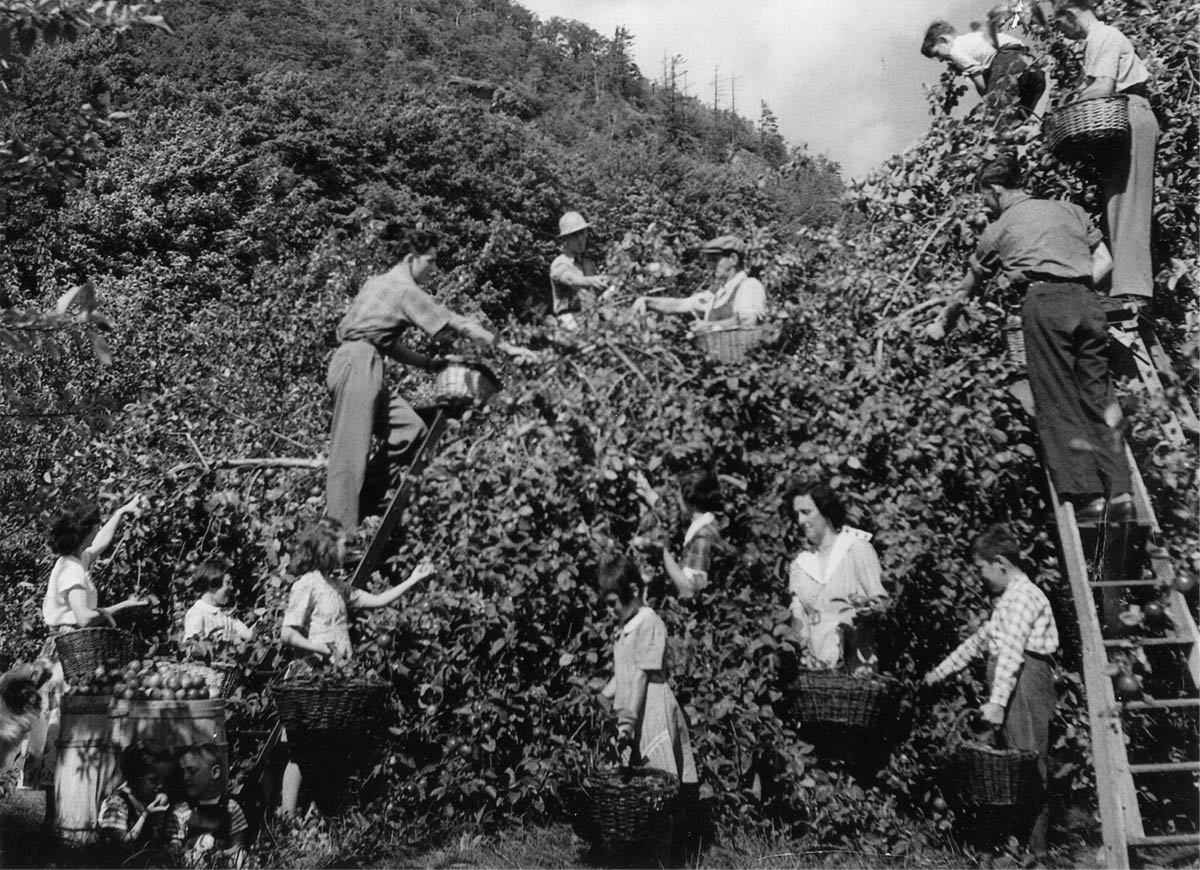
The Jodoin family, of Qubecs Cidrerie Michel Jodoin, harvests from the estate orchard in September 1950.
What You May Not Know about Cider
Today, cider is making an astronomical comeback, and consumption of this beverage continues to rise at a staggering rate. Thats something ol George Washington would be proud of. From sea to shining sea, cider holsters its history and spouts sensational stats; here are a few fun facts to juice up your cider knowledge from the start.
- Cider isnt gender specific. Men and women share a piece of the pie, with half of the drinkers being male and the other half female, unlike any other beverage.
- Cider isnt necessarily sweet. Apples might be high in sugar content, but the process of fermentation turns those sugars into alcohol, resulting in a high-octane sipper comparable in alcohol by volume (ABV) to the popular and potent India pale ale style of beer, averaging 6.5 percent and higher. After fermentation, the cider is typically dry. From that point, producers are able to add juice, sugar, or other sweeteners to sugar it up.
- Cider drinkers are often converted beer geeks. Drinkers of craft and imported beer are among some of the first to test the unknown and are eager to continue testing, so cider welcomes many of its newcomers from the beer world.
- Qubec is the most densely populated cider area on the continent. With 70+ cideries in the province and growing, the majority of the producers make at least one ice cider. The orchard-rich and scenic Montrgie region accounts for more than 60 producers.
- There are at least 10,000 apple orchards in North America. The United States hosts roughly 7,500, while approximately 2,500 are cultivated in Canada.
- The two oldest continuously operating cider mills in the United States are less than an hour away from each other. B.F. Clydes Cider Mill in Old Mystic, Connecticut, has been running the oldest (and now only) steam-powered cider mill in the country since 1881, and the Old Cider Mill has been functioning since the 1870s in nearby Glastonbury.


